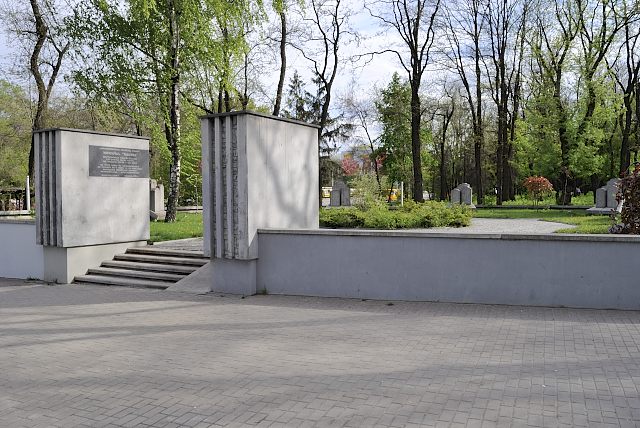As in those stormy years of World War II, 81 years later, Dnipro is under rocket fire from the enemy, suffering casualties among the civilian population. Involuntarily, those who survived the Nazi occupation and torture become witnesses of the modern tragedy, hoping to prevent a similar occurrence in the future. But we are sure that by the analogy of those years, the criminals will soon receive a fair punishment for their actions.
“The city on seven hills” was occupied by the Nazis already at the end of August 1941. According to some data, at that time there remained from 30 to 35 thousand Jews on the territory of Dnipropetrovsk; a significant part was evacuated during July-August 1941. As in other settlements in the occupied Ukrainian territories, the Nazi units resorted to the “final solution of the Jewish question” by the “simplest” method – the total destruction of the population, regardless of gender and age.
Already at the end of September 1941, Einsatz Command 6, which was a part of Einsatz Group D, arrived in the city and was praised by Nazi officials for “the rapid actions of the SD”. Probably, on the eve of the action (October 12), a meeting of representatives of the occupation authorities, the SD, the German police, the city administration and the local police was held, at which the details of the future destruction action were discussed. At that time, lists of Jewish residents had already been submitted to the administration, so the occupation authorities already knew about the approximate number of victims.
The shooting of the Jewish population took place over several days, October 13–14 (according to some sources [1] – October 14–15) 1941. According to the testimonies of the victims and the orders of the Nazi occupation authorities, in the morning of October 13, the entire Jewish population of the city was gathered in the square behind the store “Department store”, located on Karl Marx Avenue (now Dmytro Yavornytskyi Avenue). The SS began to conduct a search, during which they took away all valuables and clothes, after which they lined up the Jews in a column of 4 people and drove them under guard down the Karl Liebknecht Street (now Mykhailo Hrushevskyi Street) in the direction of the Transport Institute (now part of the Ukrainian State University of Science and Technology).
An entry about that day in his diary was made by the Dnipropetrovsk doctor M. Moshkov, who observed the Jewish procession:
…Tkachenko was walking from Sursko-Litovsk and on the way to Zaporizhzhia he saw 1,300 Jews (among them both old men and small children!) accompanied by several German soldiers and machine guns behind them. Where were they taken? They will not reach Surs'ko-Lytovs'ke (besides, the weather is disgusting: rain, fog and terrible mud). This is the second exodus from Egypt...[2]
Another eyewitness from the city, S. Shvedov, describes the events in this way:
They drove the Jews somewhere with valuables. Their meetings are in “Lux”. Their fate may vary in different ways, but for sure nothing is known yet: either they, having previously taken away all valuable property, were driven to minefields prepared by the Reds for the Germans, or they were simply shot, or they were driven somewhere to a concentration camp or Jewish colony... [3]
The victims included women and girls, the elderly, men and children of all ages. All the victims were led by the SS to the local ravine; those who resisted were beaten and forcibly dragged to the place of extermination, where they were lined up and shot in the back with machine guns. The killed fell into a pit, after which the Nazis checked and executed those who managed to survive. According to various estimates, about 11,000 Dnipropetrovsk Jews were destroyed within two days. During the next month, about a thousand more Jews met their death.
The Botanical Garden was not the only place where Jews, as well as other categories of the population, were shot. The infamous fact is the destruction of thousands of innocent people in the area of the anti-tank ditch near the Jewish cemetery (now the territory of the L.V. Pysarzhevsky Park) and in the anti-tank ditch near the village of Verkhne (now on the corner of Yangelya and Energetika Streets). In general, about 20,000 Jews were killed in our city during the Holocaust.
We bring to your attention a special video prepared by the staff of Museum “Jewish Memory and Holocaust in Ukraine” – Dr. Yehor Vradii and Dmytro Konovalov.
[1] Cited by: Круглов А., Уманский А., Щупак И. Холокост в Украине: Рейхскомиссариат «Украина», Губернаторство «Транснистрия»: монография. Днипро: Украинский институт изучения Холокоста «Ткума»; ЧП «Лира ЛТД», 2016. С. 152.
[2] Cited by: Голокост в Дніпропетровську / Є. А. Врадій, В. Г. Рибалка, М. В. Стрільчук, Д. В. Шаталов; заг. ред. І. Я. Щупак. Дніпро: Український інститут вивчення Голокосту «Ткума», ЛІРА, 2017. С. 134–135.
[3] Cited by: Голокост в Дніпропетровську / Є. А. Врадій, В. Г. Рибалка, М. В. Стрільчук, Д. В. Шаталов; заг. ред. І. Я. Щупак. Дніпро: Український інститут вивчення Голокосту «Ткума», ЛІРА, 2017. С. 135.

